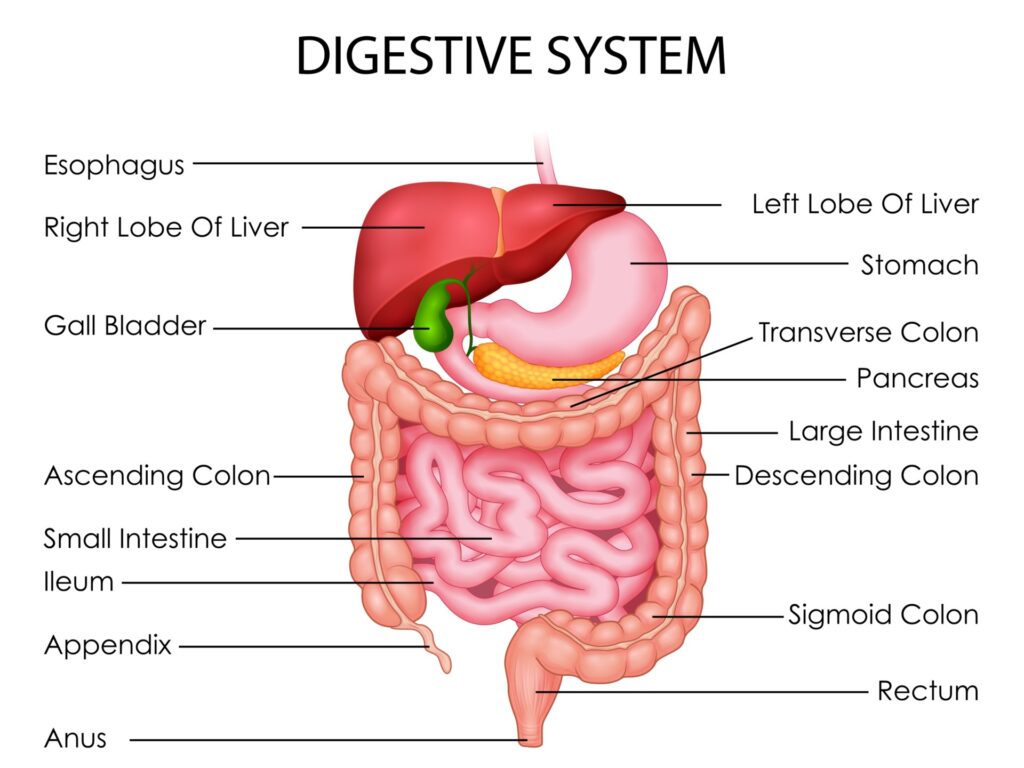What is the Human Digestive System?
Our bodies need food to provide energy, vitamins and minerals. However, in order to use food, we must first break it down into substances that can be used by various organs and cells in our body. This is the job of our digestive system.
The digestive system works in stages to digest our food. Each step is important and prepare the food for the next step. The total length of our digestive system is about 20 to 30 feet!
Here are the Main Stages of the Digestive System:
1. Chewing – Chewing is the first step of the digestive system. When you chew food, it breaks down large pieces into smaller pieces that are easier to digest and swallow. Also, your saliva is more than water. It contains special enzymes that begin to break down starches (potatoes, bread) when you chew.
2. Swallowing – Swallowing seems like a simple process to us. It’s like happening. But food doesn’t just fall from our throats to our stomachs. First, our tongue helps push food down the throat. Then there are special throat muscles that force food down a long tube leading to our stomach, called the esophagus. Not only does the food fall down the pipe, the muscles push the food until it reaches our stomach.
Simultaneously with all this going on, a flap blocks our windpipe to make sure food doesn’t go the wrong way. This is what we call “the wrong pipe” and it can cause us to suffocate. This flap is called the epiglottis and fortunately for us, it works automatically.
3. Stomach – The next stage is the stomach. Food stays in the stomach for about four hours. While the food is lying there, many enzymes are working on it, breaking down things like proteins that our bodies can use. The stomach also destroys a lot of bad bacteria so we don’t get sick.
4. Small Intestine – The first part of the small intestine works with juices from the liver and pancreas to further break down our food. The second part is where food is absorbed through the intestines and into our body through the bloodstream.
5. Large Intestine – The final stage is the large intestine. Any food that the body doesn’t need or can’t use is sent to the large intestine and then leaves the body as waste.
The Liver and Pancreas
The liver and pancreas do a lot to help the digestive system. Both work with the small intestine. The liver supplies bile (stored in the gallbladder) that helps break down fat into smaller pieces. The pancreas provides extra enzymes to help digest all foods. The liver also processes digested food from your blood before it is sent to different places in your body for use.


